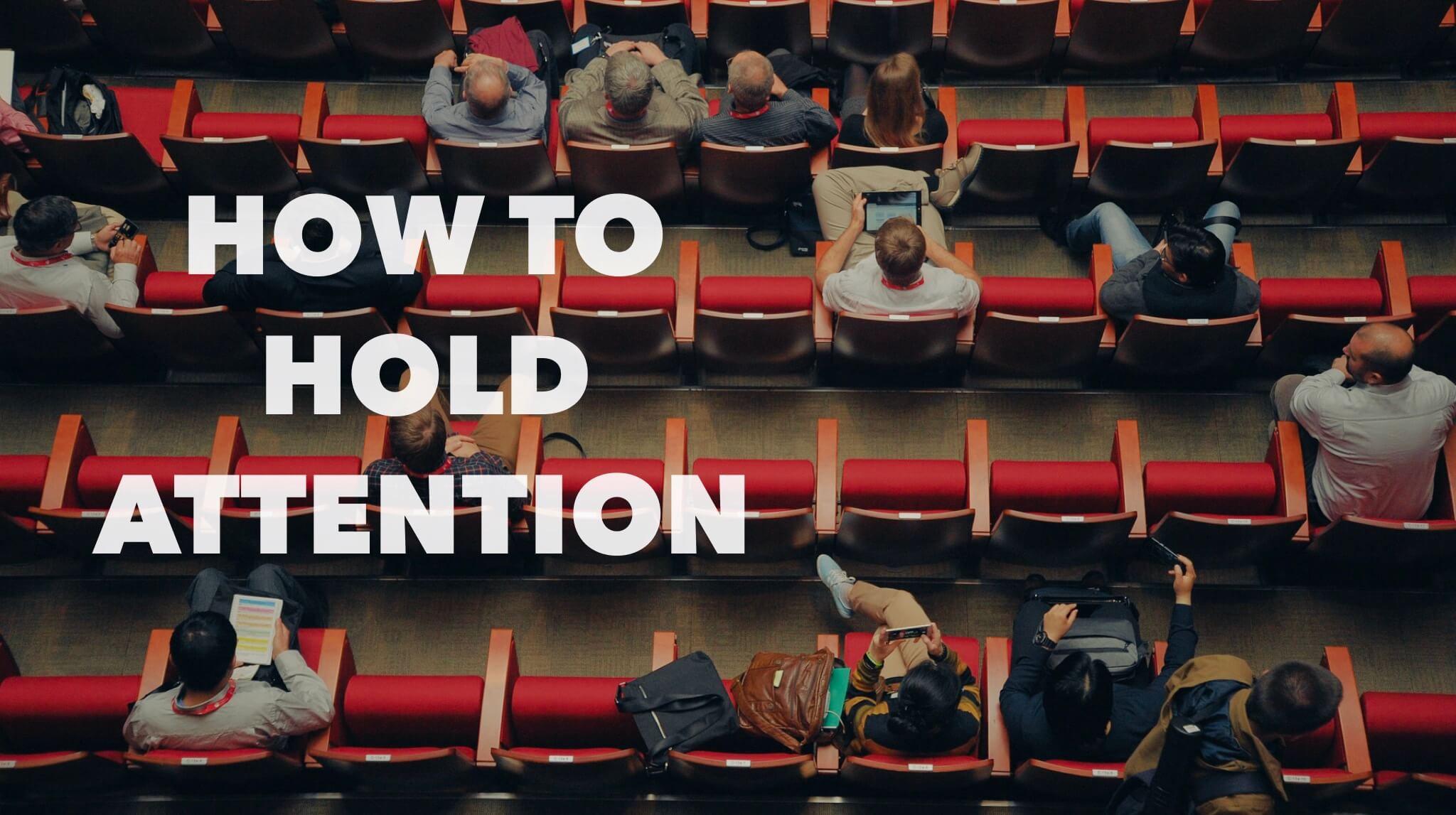How to Hold Attention in an Age of Distraction

Do you remember back in the day when people driving their cars would pull up to a red light, stop, and then they would just sit there and look at the light—waiting for it to turn green?
But now, you stop at a light and half the drivers around you whip out their phones—if they weren’t already out.
I swear I have to honk at a car stopped at a green light at least once a day now. I even count to ten first to allow them sufficient time to look up and see the error of their ways. But when that doesn’t happen, I have no choice but to give a polite honk and a friendly reminder: “Get off your phone!”
This screen addiction is ruining driving and raising my blood pressure.
Can’t we wait a single minute in silence or even just listening to the radio? Do we have to fill every second with a screen?
It certainly seems like our attention spans are shorter today.
But, there’s another phenomenon in our culture that’s also interesting: binge-watching Netflix.
By “binge-watch” I mean spending hours watching one episode after another until the shows run out and you get a tiny bit sad because you don’t know what to watch next.
Our binge-watching culture proves that people can focus their attention for hours on end. So does that contradict the short attention span idea?
No, I think it reveals it for what it is. It’s not that our attention is shorter, but we have a shorter tolerance for things that hold our attention.
Stop lights don’t hold people’s attention anymore.
Lines at the grocery store don’t hold people’s attention.
But a good story still does.
How This Affects Your Preaching
People are less tolerant of boring preaching.
If you drone on and on and on, never getting to the point, you won’t hold people’s attention for long.
Their attention will drift. They’ll pull out their phones. And you’ll lose them fast.
So how can you hold their attention?
Use what’s working. Look at the essence of a good story.
Stories hold attention with tension.
This is why we keep coming back to those shows on Netflix. There’s always a tension, a struggle. Something is hanging in the balance, and we have to know how it resolves.
There’s a hero that encounters a problem. The story is simply how the hero overcomes the problem.
- Will the bad guy win?
- Will she ever find the right guy?
- Who is the murderer, and will they get away with it?
You might remember this from a high school English class if you paid attention.
Nearly every story follows the same pattern: introduction > conflict > rising action > climax > resolution.
The story begins and the hero encountering some form of conflict (that’s the tension). The story continues as the hero struggles with the conflict until a breaking point at the peak of the action. The conflict ends, and the story resolves.
It can be helpful to think of a sermon like a good story.
Who Is The Hero?
First, you need to know who the main character in this story is.
It’s not you.
If the sermon becomes is about the pastor, it’s just a self-indulgent mess. It’s about making yourself look good. It’s about your image, your glory.
The main character of the sermon is the audience.
You might object. “No, Jesus is the hero of my sermon!”
Yes and no.
Yes, the Bible is ultimately about Jesus. He is the hero who saves everyone.
But in the context of preaching, you may be telling the story of Jesus from the Bible, but you are preaching to an audience. They are the main character in their story, and Jesus is the resolution.
Perhaps it would help to think of your preaching like this: You (the preacher) are the guide who interprets the ancient text (the Bible) that points the hero (your audience) to the solution to the problem (Jesus).
What Is The Tension?
Once you understand everyone’s role in the story, you can move on to identify the tension.
What problem must the hero (your audience) overcome?
- Maybe they are stuck in a habitual sin that is destroying their life.
- They are wrestling with doubts that God exists.
- Their marriage is on the brink of divorce.
Whatever the problem, like a great story, you need to start your message by emphasizing this tension.
What does it look like? What does it feel like? What might happen if it goes unresolved?
For example, imagine you’re preaching a sermon on a passage of Scripture about persevering through trials (like 1 Peter 1:6-9).
You could start by telling a story of someone in the church who has endured many trials in their life. Perhaps you talk about dealing with the grief of medical, financial, or relational problems and how life can feel so overwhelming sometimes.
But then you’ll want to say something like, “But what if there was a better way? What if you could overcome the debilitating anxiety and grief that we all experience with these kinds of trials? Well, I believe there is. And today, we are going to look at how God helps us through the trials we all face.”
Now you’ve built the tension. Your audience will lean in because it’s a problem they have and you’ve also given them the hook of a solution to the problem. So as long as you stay focused, keep your promise, and address the tension with the rest of the sermon, you’ll have their attention because they want the resolution you’ve promised.
When you make the audience the hero, highlight a problem that they feel, and provide a solution, you’ll have their attention every time.
Tension Holds Attention
Nancy Duarte has a great TED talk on this that you need to watch if you haven’t seen it. She found that all of the best speeches in history have this one theme in common. They all hold the audience in a tension.
They create tension by comparing the current reality (what is) to the ideal future (what could be).
- Here’s what things are like now, but here’s the way they could be.
- Today, you might be feeling this. But what if it could be more like this!
- This is how it is. This is how it could be.
The contrast of the ideal future with current reality creates tension. We all want the ideal future, but we are stuck for now in the current reality.
In our age of distraction, it’s harder than ever to hold people’s attention.
So learn from what works. Like a good story, keep your audience’s attention by creating tension.
There’s more to capturing an audience’s attention than just the tension in the message. Variety, staying on subject, keeping things moving, speaking in words people understand, and other sermon delivery tactics help too.
But if you don’t begin with the tension, you’ll struggle to hold anyone’s attention.


Really encouraging Brandon.
I like the way this post is both challenging (we need to work hard to keep people’s attention) and positive (other’s do it so we can too).
Thank you